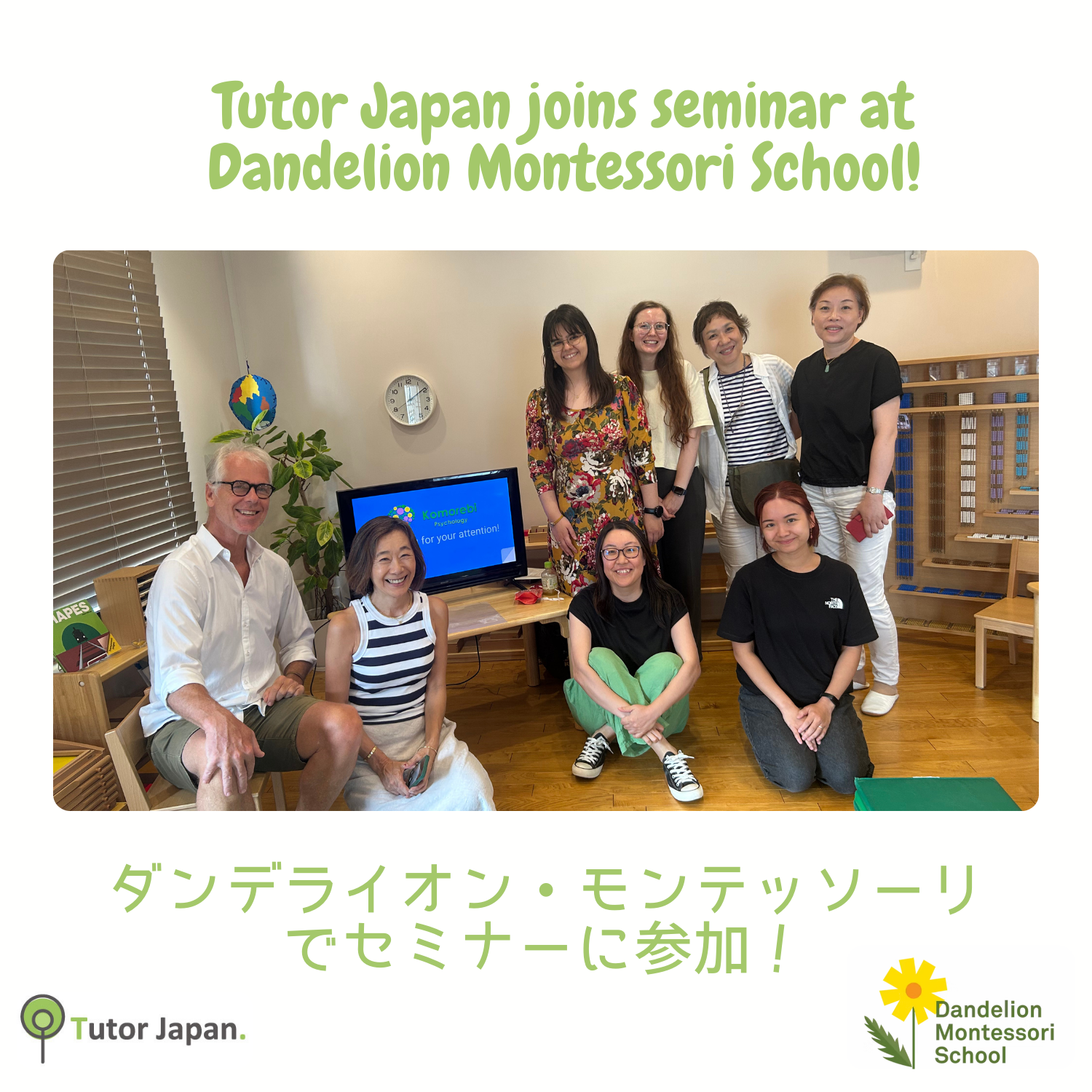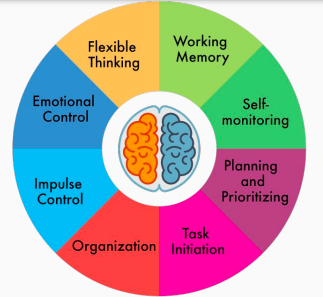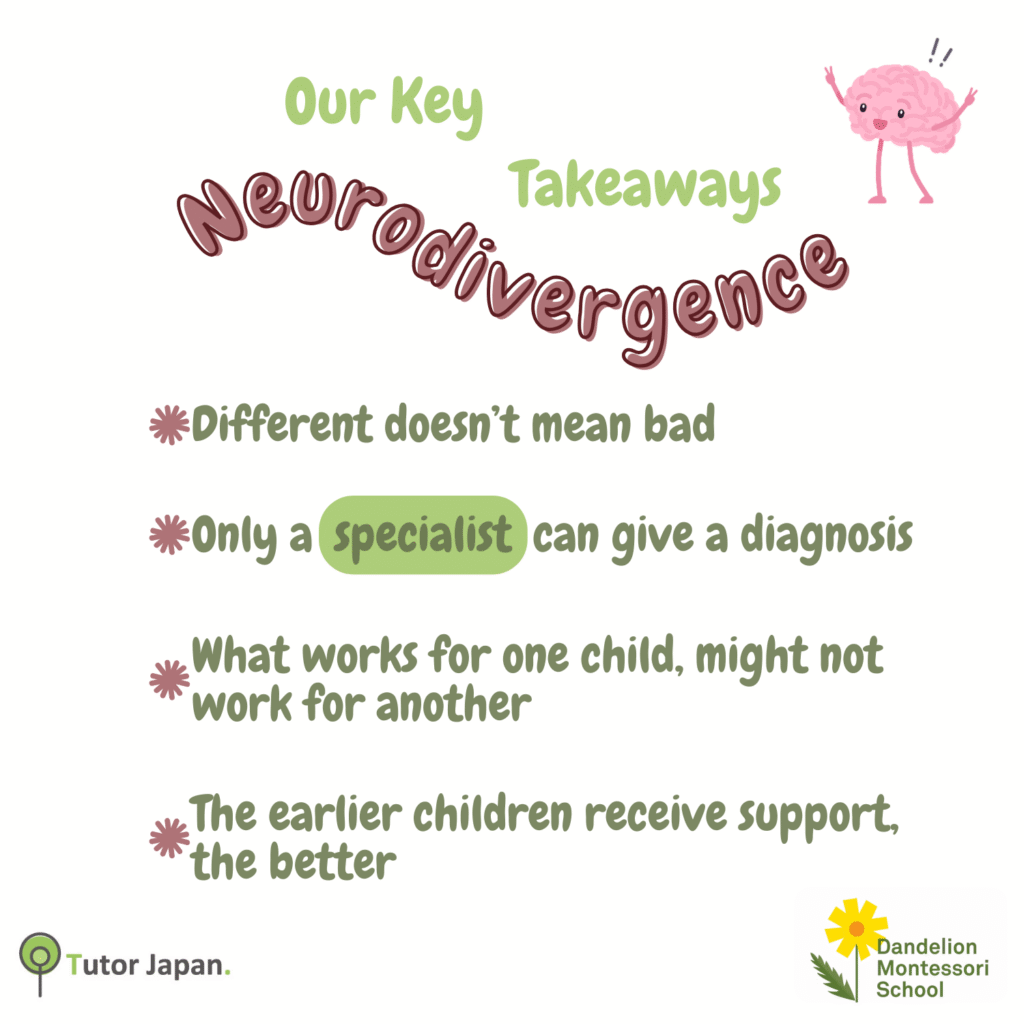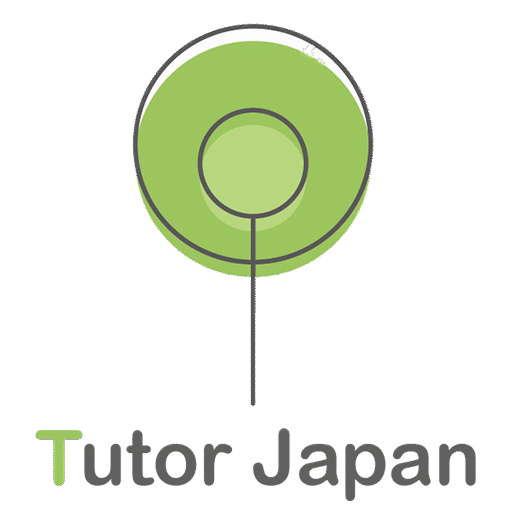
Tutor Japan team recently joined a seminar on Neurodivergence at Dandelion Montessori School. The seminar was led by clinical psychologist Denisse Warumi, who has over 15 years of experience working with children and adults. Denisse has her own practice, Komorebi Psychology, in Tokyo, and offers her services in English, Spanish and Japanese.
Learn more about her at https://www.komorebi-psychology.com/.
What is Neurodivergence?
Neurodivergence, sometimes also referred to as Neurodiversity, means that all brains are different. Other relate terms include “neurotypical,” which means behavior or brain activity that people perceive as common, and “neuroatypical,” which refers to presentation of brain activity beyond the average presentation. Examples for neuroatypical include gifted children, learning disabilities, or autistic behavior.
It’s important to remember that:
All brains are different. Being different does not necessarily mean being sick, disordered, or deficient.
What were the Learnings from the Seminar?
The seminar covered a range of topics around Neurodiversity and how to support children who are not neurotypical. This included theoretical knowledge to understand the differences among common neuroatypical behavior, and officially recognized disorders, syndromes, etc. We learned about the behavioral presentation of children, what “symptoms” or behaviors to look out for, and the differences in how symptoms “present” between boys and girls.
An important takeaway from the seminar is how neurodivergence can impact one’s executive functioning skills. Executive functions are the set of cognitive and mental skills that help us be functional in our daily life activities.

In the lecture, we focused on the cognitive and mental skills you can see on your left. Different conditions impact these skills to various degrees, so it’s important for parents and teachers to work together to discuss a child’s behavior to understand if something seems to fall out of the ordinary. This helps to identify areas that need support early, and ensures that the child receives the right support. While it may take time to find the source of the difficulties, it’s important to not give up.
One strategy to help children who struggle with organization is to use colors and shapes to label certain things, such as a blue circle to represent where a certain book goes, or a green square for arts and crafts. Small changes can make a big impact when kids are struggling.
As research in this field of study is growing, an increasing number of girls are being diagnosed with ADHD and other syndromes/disorders. Research illustrates that there are also differences between boys and girls in how symptoms present, even from a young age. Therefore, it is important for educators to carefully observe students, and to be aware of these differences as well.
Moreover, when children are able to express themselves and understand how they feel, adults can easily suggest a strategy for children to try when they have problems. For example, if child often covers their ears because they are feeling overwhelmed, try giving them some quiet time in a cozy corner with dimmer lighting where the child can read by themselves to calm down. Children can also learn about emotions by discovering the wheel of emotions. The Wheel of Emotions can be very detailed, so it’s recommended to start slowly with simpler emotions and feelings. A good way for children to internalize emotion words, is by drawing faces for each feeling.
When children experience new situations it is vital to empathize with them, and to validate their feelings. In situations where students are struggling, adults must remain calm and appeal to the child with patience. Even before a meltdown or other problem occurs, helping students identify their “toolbox” for dealing difficult situations is a great start.
Key Takeaways
It’s important to remember that just because a child behaves differently compared to other classmates around their age, they do not necessarily have a diagnosable problem. Additionally, only professional experts and licensed medical staff are able to provide a proper diagnosis. Educators can simply provide a recommendation or some advice and suggest the child visits a professional to receive targeted support.

Not every strategy will work for every child. Every brain works differently and it’s important to remember that using a variety of tasks and learning strategies is essential for a child to develop and grow. Some children respond better to others methods, so you keep on trying until you find something that works. But the earlier we detect atypical behavior, the faster we can provide better support for the children to learn and grow.
